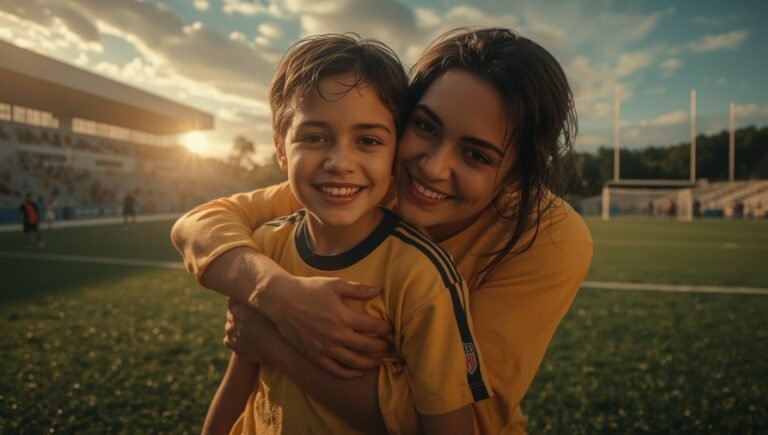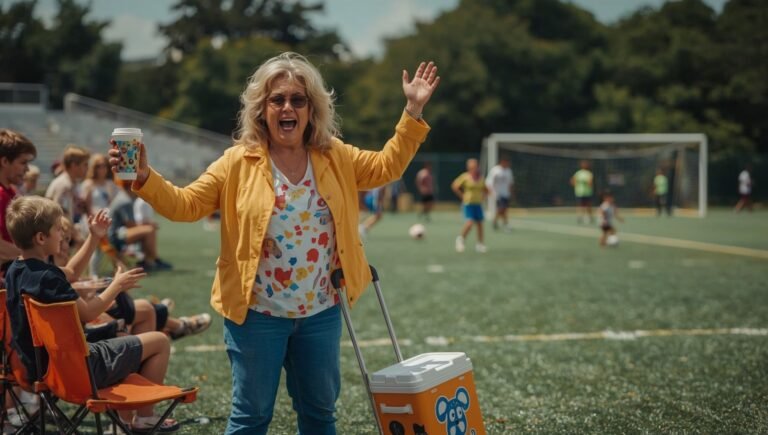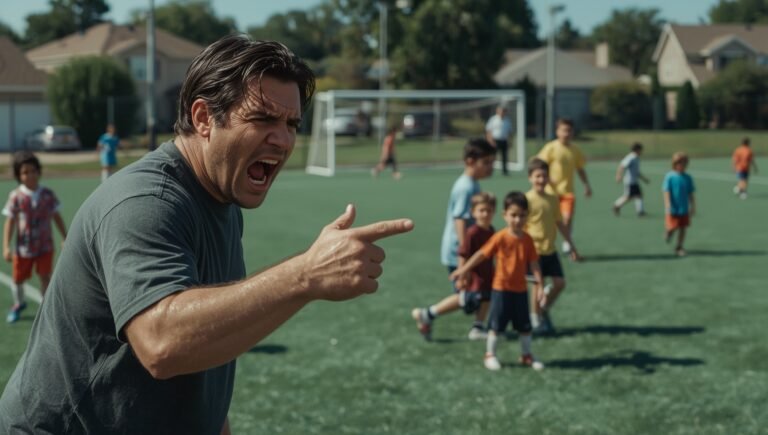
Your kid’s coach just emailed a practice schedule longer than a Supreme Court ruling, and you’re wondering if you should sell your car to cover tournament fees. Meanwhile, another coach is promising “elite pathways” that sound more like an infomercial than a real plan. On the sidelines, parents whisper about scholarships while you sip lukewarm coffee and try not to panic. Welcome to the ultimate sideline debate: early sports specialization vs multi sport childhood.
This isn’t just about sports, it’s about health, happiness, burnout, broken bank accounts, and whether your kid still likes playing the game. Let’s break it down, with humor, real talk, and a few sideline survival tools you’ll probably want in your Amazon cart before you’re done reading.
What Early Specialization Really Means

Early sports specialization is when a child locks into one sport, often before puberty, and plays it year round. No real breaks, no off season. It’s lacrosse in fall, winter, spring, and summer. It’s hockey every single month, with maybe two weeks off where you remember what life was like before you lived in a rink. It’s soccer every weekend until you don’t even bother unpacking the trunk anymore.
Why does it happen? Pressure. Coaches pitch year round commitment as the only path to college opportunities. Travel teams sell parents dreams of scholarships. Other families brag about how many camps their kid is in. The result? Parents feel forced to choose early specialization just to keep up.
The American Academy of Pediatrics warns against this before age 12, pointing out the increased risk of injury and burnout. Yet, here we are, watching sideline parents write another check and convince themselves it’s “just for this season.” Read the AAP’s warning here.
Why Parents Lean Into Specialization

There’s a reason the allure is strong. Parents believe that sticking to one sport gives kids a head start. The logic goes: more hours equals sharper skills. Coaches sometimes pay more attention to kids who look “polished” at an earlier age. A child can also build an identity, being “the lacrosse goalie” or “the hockey kid,” which can boost confidence.
It’s tempting. Especially when you hear stories of kids going D1 or turning pro. The dream feels closer if your child never takes their foot off the gas. But here’s the mock news headline nobody wants to print: “Local parent spotted at lacrosse field for 97th consecutive weekend. Family unsure if he still lives at home.” That’s the reality of chasing specialization too hard.
The Hidden Costs of Early Specialization

Here’s the sideline truth: the downsides often show up louder than the upsides. Burnout sneaks in quietly, then hits like a truck. The kid who once slept in jerseys now drags their feet to practice and mutters about quitting. What was once passion turns into pressure.
Physically, it’s a mess. Same sport, same motions, over and over. Orthopedic doctors see a revolving door of young athletes with repetitive injuries, stress fractures, torn ligaments, shoulder and elbow damage. According to the CDC, overuse injuries make up nearly 50 percent of all sports injuries in middle and high school athletes. Parents call it “just bad luck,” but it’s not. It’s the cost of overuse.
Financially, the numbers are staggering. The average travel team season costs anywhere from $2,000 to $10,000 a year depending on the sport. Families joke about needing a second mortgage, but behind the laughs is a serious financial strain. (Pro tip: save a little for yourself with a portable massage gun on Amazon because you’re going to need it just as much as your kid does.)
Emotionally, kids lose the joy. When a sport feels like a job, they start acting like disgruntled employees. Nobody wants their 12 year old negotiating PTO just to get a weekend off.
Parent quote: “We didn’t choose specialization, specialization chose us. And also emptied our savings.”
Why Multi Sport Childhood Usually Wins

On the flip side, multi sport kids look like chaos, but they’re thriving. They move from soccer to basketball to lacrosse, each sport sharpening different muscles and skills. The agility from basketball improves defense in lacrosse. The vision from hockey makes them sharper in soccer. The crossover is real, and it gives them an edge in the long run.
Even better? They stay mentally fresh. Every season brings new teammates, new sidelines, and new snack rotations. Parents get new gossip circles. Kids avoid boredom. And they learn how to adapt, how to start fresh, and how to build resilience.
Studies back this up. Multi sport kids are less likely to get injured, more likely to play longer, and often perform better once they eventually do specialize in high school. Around 70 percent of kids drop out of organized sports by age 13, and burnout is a big reason why. Multi sport participation keeps kids in the game.
Professional athletes constantly credit multi sport backgrounds for making them elite. Patrick Mahomes played baseball. Abby Wambach played basketball. Wayne Gretzky even played lacrosse.
And let’s not overlook the practical parent win: multi sport kids are basically superheroes at finding lost cleats across three different bags. Save your sanity with a rolling sports bag from Amazon instead of playing trunk Tetris every season.
For more ways to survive the grind, check out our article on Quick Post Tourney Rebound Plans. Your body and your sanity will thank you.
Parent quote: “Multi sport isn’t chaos, it’s survival. My kid has three sets of teammates and at least two sets of shin splints.”
Finding the Right Path for Your Kid
Not every child is the same. Some truly love one sport and want to live it year round. Others crave variety. The danger comes when the choice is made by parents chasing scholarships instead of kids chasing joy.
Pay attention. Does your kid smile when they play? Do they toss the ball around after dinner just for fun? Or do they groan at practice time and daydream about quitting? Their answers matter more than any coach’s opinion.
Reality check: less than 2 percent of high school athletes compete at the Division I level. Less than 1 percent go pro. Those are lottery odds. The real win is raising a child who loves being active, stays healthy, and keeps friends for life. No scholarship required.
Sideline Survival Kit

Surviving youth sports isn’t just about the kids—it’s about the parents too. Here’s the ultimate Sideline Survival Kit you’ll wish you had sooner:
- Portable massage gun – for parents and athletes recovering from endless weekends.
- Rolling sports bag – because playing Tetris with the trunk isn’t a real sport.
- Stainless steel insulated mug – keeps coffee hot when you’re freezing at 7 AM games.
- Noise canceling headphones – for tuning out sideline meltdowns and referee “experts.”
- Ice packs and compression wraps – when overuse injuries show up faster than pizza after practice.
Sideline Survival and Viral Truths
The Sideline Legends take is simple: whether your child plays three sports or one, the legend isn’t about how early they specialized, it’s about whether their eyes still light up when they step on the field. That spark is worth more than a thousand trophies.
So when a coach pushes “elite pathways,” nod politely, sip your coffee from a stainless steel insulated mug, and remember, the true pathway is the one that keeps your kid happy and wanting to play. Bonus points if you bring noise canceling headphones for the parents’ section, because sideline chatter is its own sport.
Now we want your stories. Did early specialization burn out your child? Did multi sport life save their sanity? Drop your story in the comments and tag the parent who most needs to read this. Let’s get the sideline truth out there.
For more laughs and survival tips, check out our post on Toxic Sideline Parents. For the medical side of the debate, see the American Academy of Pediatrics’ statement. Between expert advice and sideline wisdom, we’ll help you survive another season.
FAQ: Early Specialization vs Multi Sport
What age should kids specialize in sports?
Experts recommend waiting until at least age 12, ideally later, before focusing on one sport. Before that, variety is better for development and health.
Does early specialization guarantee a scholarship?
Absolutely not. College recruiters value skill, athleticism, and attitude—not how many years your child played one sport.
What sport has the highest burnout rate?
Sports with heavy year round demands like gymnastics, hockey, and soccer see some of the highest rates of early burnout.








